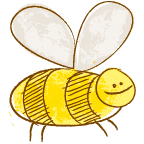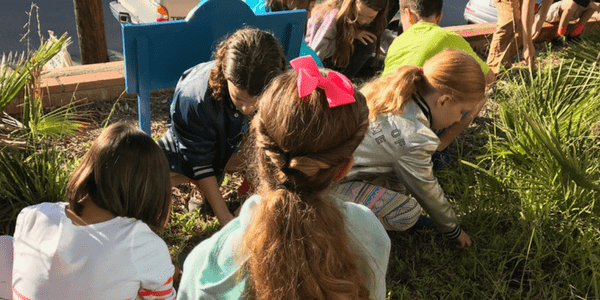At Marquez Charter Elementary, the gardens bring lessons to life.
The school’s well established garden program started nearly three decades ago. As it evolved, they have added multiple gardens to connect it with curriculum units for each grade.
Students begin gardening in the spring of second grade with a salsa garden. They plant tomatoes, cilantro, onions and jalapeños, and begin to learn gardening basics: how to plant, care for, and harvest each food. Then in third grade, they harvest these ingredients and make fresh salsa in the classroom.
Growing and making salsa opens up a discussion about how people all over the world use many of the same foods—a launch pad for conversations about food and its role in culture and history. The salsa garden also ties in with second grade science lessons about plants and animals.
Every spring, third graders plant a three sisters garden—the classic trio of corn, beans and squash grown by many Native Americans.
“They relate this garden to what they’re learning in social studies, they prepare the soil, and they plant it,” explains Marie Steckmest, garden coordinator and UCCE Master Gardener. “They see it grow. When the students return in the fall for fourth grade, it’s harvest time, and the first lesson they do as a class is to make succotash. So we tie it together from grade level to grade level, and there’s continuity.”
Parent volunteers help the kids cook the corn, beans and squash in the classroom in an electric frying pan. Kids are divided into groups to rinse, cut and prep the veggies, and cook them up with garlic and seasonings.
When third and fourth grades study Native American history and culture, students visit the Native American garden and learn more about the Chumash and Tongva tribes. This garden is positioned on school grounds in a spot with high visibility to help educate the surrounding community too.
“Our Native American garden is a hands-on showcase of the plants that local Native Americans used in their daily life,” explains Marie Steckmest, garden coordinator and UCCE Master Gardener.
“Our Native American garden is a hands-on showcase of the plants that local Native Americans used in their daily life.”
Students also learn how the Chumash and Tongva used native plants like white sage, black sage, hummingbird sage, mugwort, California poppy, monkey flower, sagebrush, and others—all of which still grow wild in the local mountains.
In fifth grade, students plant a Jeffersonian garden while studying Thomas Jefferson. Not only do they learn about his presidency and life at Monticello, they also learn that he saved seeds, and asked Lewis and Clark to bring back seeds and plants from their expeditions.
“The kids learn the meaning of heirloom,” Marie says. “They plant heirloom seeds we order from Monticello [purchased online with support from a local garden club and realtor]. They grow one of Jefferson’s favorite crops: peas. A favorite activity of the students is cooking peas with pasta. We also plant tennis ball lettuce, another favorite crop of Jefferson’s time. We ask the kids if anyone has a family heirloom. Someone might have a quilt or a ring, and they can relate to that. Then we talk about heirloom tomatoes because they’re easy to find. We talk about how people save the seeds of the plants they like, and grow them again. Then we talk about what hybrids are. The discussion also leads into plantations, and we talk about slavery. So, we sit outside and just talk, about Jefferson, who he was, where he lived, how Monticello was farmed.”
The garden provides a natural backdrop for discussion, and helps kids connect with the history. For some students, it makes the lessons more relatable. And for many kids, time in the garden changes how they view the present-day world too.
“The garden at my school has introduced me to many new vegetables and fruits,” says eight-year-old Parker. “I tried beet leaves on Tuesday, and did you know we have strawberry guavas? I love having an edible garden at my school because I get to try all kinds of fruits and vegetables that my friends and I have just harvested.”



